Elephants are magnificent mammals and the largest land animals on Earth, predominantly found across Africa, from south of the Sahara to southern Asia and Southeast Asia. As herbivores, they inhabit various environments, including savannas, forests, deserts, and swamps. Known for their longevity, elephants can live up to 70 years in the wild. They are celebrated for their strength, intelligence, and deep emotional capacity, often showing empathy towards their dying or deceased companions. Humans have admired elephants for centuries, featuring them in numerous religions, cultures, and folklore. Historically, elephants were used in warfare, and today, they are often seen in zoos and circuses. Unfortunately, they currently face threats of extinction due to various factors, prompting many conservation efforts to protect them .
Physical Characteristics
Elephants are enormous creatures, with male African elephants weighing up to 7.5 tons. They are easily recognizable by their long, flexible trunks, large flapping ears, and thick, wrinkled skin. There are three main types of elephants: the African savanna elephant, the African forest elephant, and the Asian elephant. African elephants, both savanna and forest species, have large ears and visible tusks in both males and females, along with deeply wrinkled skin and a sloping back. They are the largest land mammals; the heaviest recorded was an adult male savanna elephant weighing 10,886 kilograms and measuring 3.96 meters at the shoulder. Asian elephants, in contrast, have smaller ears, typically have visible tusks only in males, and have a domed back. Generally, African elephants are larger than their Asian counterparts.
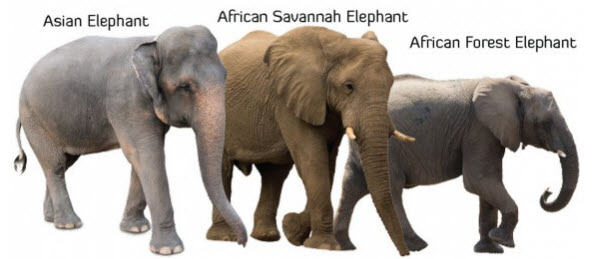
Unique Adaptations
Elephants’ ears serve as natural air conditioners. On hot days, they flap their ears to cool the blood flowing through the numerous blood vessels, which helps regulate their body temperature. Being in water enhances this cooling effect as they spray water on themselves to stay cool. Elephants have thick skin, up to 2.54 cm in some areas, which is loose and appears wrinkled. This skin helps retain moisture longer, which is crucial for thermoregulation, but despite its thickness, the skin is very sensitive to touch and sunburn. To protect themselves from the sun and biting insects, elephants often bathe in water, roll in mud, or cover themselves with dust.
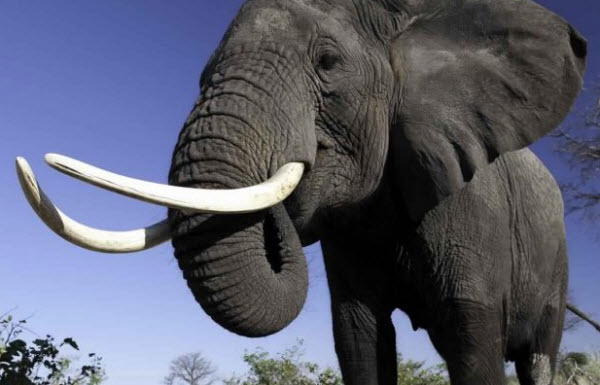
Elephants have exceptionally long tusks that they use for defense, digging for water and food, and lifting objects. At birth, elephants have deciduous tusks, which are replaced by permanent tusks at around two to three years old. These tusks grow throughout an elephant’s life and are composed of dentin beneath the outer enamel layer, giving them a distinctive shine. Unfortunately, African elephants are often poached for their tusks, which, along with their molars, are crucial for their survival. Elephants have four molars, one on the top, one on the bottom, and two on each side of the mouth. These teeth, which can weigh around 2.3 kilograms each, grow horizontally from the back to the front of the mouth, pushing out old, worn teeth. Elephants usually have six sets of molars throughout their lives. As elephants age, their molars wear down, making it difficult for them to chew harder vegetation, leading older elephants to prefer softer vegetation found near swamps.
The elephant’s trunk, an elongated fusion of the upper lip and nose, is incredibly strong, capable of pushing down trees, grasping objects, and performing delicate tasks. The trunk ends in two finger-like projections that can grasp tiny objects, spray water, or pull leaves from trees. Elephants also use their trunks to produce a variety of sounds, some of which are too low for human ears to detect, allowing them to communicate over long distances.
Social Structure and Behavior
Elephants are highly social animals, often living in herds. Asian elephants are predominantly found in India, Nepal, and parts of Southeast Asia, primarily in rainforests and along rivers during the dry season. African elephants are distributed across East, Central, and Southern Africa, inhabiting lowland and montane forests, floodplains, and various woodlands and savannas. Smaller African forest elephants reside in the Congo Basin and West Africa’s moist, semi-deciduous rainforests.
Elephants consume a wide variety of plant materials, from grasses and fruits to leaves and bark, typically eating 75 to 150 kilograms of food daily, about 4 to 6% of their body weight. They spend around 16 hours a day feeding.
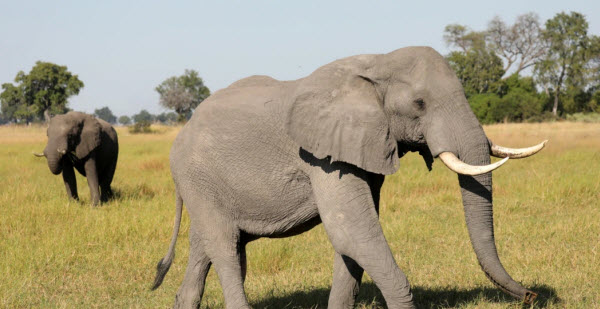
Newborn elephants, or calves, are usually about one meter tall and covered in fine hair with long tails and short trunks. They are heavily dependent on their mothers and other herd members for nourishment and protection, gaining an average of 1 to 1.3 kilograms daily in their first year.
Most elephants live in social groups called herds, usually consisting of females and their offspring. The leader of the herd is known as the “matriarch,” typically the oldest and most experienced female, who knows where to find food and water, how to avoid predators, and the best places for shelter. The matriarch also keeps the younger elephants in line and teaches them how to behave within the elephant community. In some cases, the herd includes the matriarch’s sisters and their offspring. When groups become too large, they may split but maintain loose connections with each other.
Adult male elephants usually do not live in herds. Once they are old enough to find food and protect themselves, they leave the herd and live alone or form bachelor groups with other males. Adult males visit female herds only for short periods to mate. Male elephants do not participate in raising the young. Hierarchies and social rules are crucial in elephant communities, where trunks are used for greeting, touching, twining, wrestling, and checking reproductive status.
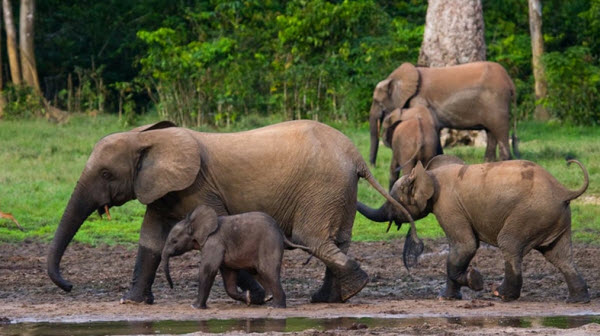
Threats and Conservation
Elephants, especially calves, face threats from predators such as hyenas, lions, leopards, crocodiles, and tigers. However, as long as they stay close to their mothers or herd, they are generally safe. If elephants sense danger, they emit a high-frequency alarm call to alert others. The herd then forms a protective circle around the calves while the adults face outward to confront potential threats. The only predator of a healthy adult elephant is a human hunter with a powerful rifle.
Despite the challenges, elephants play, form bonds, and engage in social interactions throughout their lives. Young elephants spend much of their time playing but must still establish their social status within the herd. They practice coordinating their four legs and using their trunks, which they initially struggle with but learn to master as they grow older. By two or three years old, calves no longer need to nurse.
Elephants are relentlessly hunted for their tusks, and despite being protected by law, poaching continues. They also face other threats, including habitat loss due to human expansion, which limits their access to food and water. As a result, Asian elephants and African savanna elephants are classified as endangered on the IUCN Red List. African forest elephants are also under threat but to a lesser extent.
Identification Card
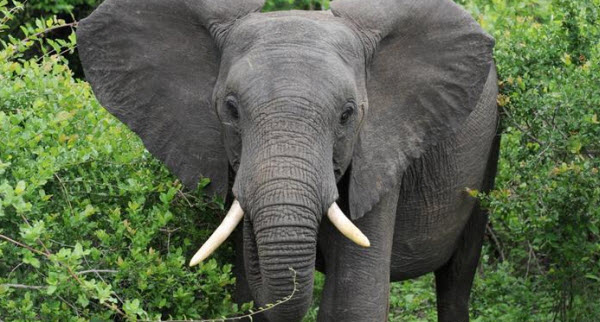
- Category: Mammals
- Order: Proboscidea
- Family: Elephantidae
- Species: Loxodonta africana, Loxodonta cyclotis, Elephas maximus
- Lifespan: Late 30s to over 50 years
- Gestation Period: 20 to 22 months
- Birth Weight: 50 to 120 kg
- Birth Height: 66 to 107 cm
- Maturity: 13 to 20 years
- Average Height: 2.4 meters for females; 3 to 3.2 meters for males
- Weight: Female African elephants up to 3,600 kg; males up to 6,800 kg. Female Asian elephants up to 2,720 kg; males up to 5,000 kg.
Quick Facts About Elephants:
- Elephant skin is so sensitive that they can feel a fly landing on them.
- Elephants’ low-frequency calls can be heard by other elephants up to 8 kilometers away.
- On India’s Andaman Islands, elephants swim across the sea between islands.
- Elephants tend to prefer one tusk over the other, much like humans are left- or right-handed, with one tusk often showing more wear than the other.
- Unlike most mammals, elephants grow throughout their lives.
- Are elephants really afraid of mice? It’s more accurate to say that they are startled by small animals.
- Elephants sleep a few hours lying down and sometimes snore.
This comprehensive and unique overview of elephants highlights their incredible adaptations, social structures, and the challenges they face today. Protecting these majestic giants is crucial for maintaining the ecological balance and ensuring their survival for future generations.
